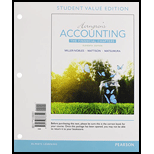
1)
Concept Introduction:
Forms of organizational structures of Businesses
• Several options exist for creation of new entities such as
• For instance, when the objective is to form a joint venture for a short duration, a partnership firm is the most appropriate since it allows for quick distribution of
• Similarly, opting for the corporate structure of organization of business comes with its own set of merits and demerits. Some of the advantages include perpetual continuity, separation of ownership from management, distinction of personal and business assets and liabilities etc.
Main advantage of corporate structure of ownership
2)
Concept Introduction:
Classes of shares:
• Shares provide partial ownership or a “share” of a corporation. There are two primary classes of shares – Equity Shares and
• Equity shares are the class of shares which carry voting rights and equity share holders are the true owners of the company as in the event of dissolution, equity shareholders get last preference in clearing the amounts invested and there is no guarantee of profits / dividend on an annual basis.
• Preference shares are the class of shares which do not carry voting rights and in the event of dissolution, preference shareholders get first preference in clearing the amounts invested and there is usually guarantee of profits / dividend on an annual basis. Convertible Preference shares are preference shares that carry the option to be converted into equity shares after certain duration.
Which class of shares should be issued?
Requirement 3
Concept Introduction:
Calculation of Shares to be issued
• Shares provide partial ownership or a “share” of a corporation. There are two primary classes of shares – Equity Shares and Preference Shares.
• Equity shares are the class of shares which carry voting rights and equity share holders are the true owners of the company as in the event of dissolution, equity shareholders get last preference in clearing the amounts invested and there is no guarantee of profits / dividend on an annual basis.
• In the event that the capital to be issued is decided, the number of shares to be issued is calculated as the capital to be raised divided by the issue price of the equity shares.
To Calculate:
Number of shares to be issued.
Want to see the full answer?
Check out a sample textbook solution
Chapter 13 Solutions
Horngren's Accounting, The Financial Chapters, Student Value Edition Plus MyLab Accounting with Pearson eText -- Access Card Package (11th Edition)
- Get correct answer this general accounting questionarrow_forwardInternal controls are the rules and procedures that a company develops and implements. These controls help to maintain the accountability and integrity of the accounting information as well as help to prevent fraud. There are many objectives of a well-designed internal control structure in an organization. These include having a controlled environment, assessing risks, and monitoring. An example of a control that I personally use would be in our register system. Every night, the evening cook/helper counts down the cash register drawer and lets me know how much cash was in the drawer over the amount that we leave in it every night of $125. The next morning, I compare the information from the cash register balance sheet to the computer system to ensure all numbers match up. These numbers are then recorded daily into a monthly spreadsheet that we ensure balances at the end of the month. Respond to ally's postarrow_forwardPlease give me correct answer this financial accounting questionarrow_forward
- Internal control in a business organization and the reporting of cash on the balance sheet as well as managing receivables and estimating uncollectible accounts is important. What is internal control, and what are the objectives of a well-designed internal control structure in an organization?arrow_forwardCan you please solve this accounting problem?arrow_forwardPlease need answer the general accounting questionarrow_forward

 AccountingAccountingISBN:9781337272094Author:WARREN, Carl S., Reeve, James M., Duchac, Jonathan E.Publisher:Cengage Learning,
AccountingAccountingISBN:9781337272094Author:WARREN, Carl S., Reeve, James M., Duchac, Jonathan E.Publisher:Cengage Learning, Accounting Information SystemsAccountingISBN:9781337619202Author:Hall, James A.Publisher:Cengage Learning,
Accounting Information SystemsAccountingISBN:9781337619202Author:Hall, James A.Publisher:Cengage Learning, Horngren's Cost Accounting: A Managerial Emphasis...AccountingISBN:9780134475585Author:Srikant M. Datar, Madhav V. RajanPublisher:PEARSON
Horngren's Cost Accounting: A Managerial Emphasis...AccountingISBN:9780134475585Author:Srikant M. Datar, Madhav V. RajanPublisher:PEARSON Intermediate AccountingAccountingISBN:9781259722660Author:J. David Spiceland, Mark W. Nelson, Wayne M ThomasPublisher:McGraw-Hill Education
Intermediate AccountingAccountingISBN:9781259722660Author:J. David Spiceland, Mark W. Nelson, Wayne M ThomasPublisher:McGraw-Hill Education Financial and Managerial AccountingAccountingISBN:9781259726705Author:John J Wild, Ken W. Shaw, Barbara Chiappetta Fundamental Accounting PrinciplesPublisher:McGraw-Hill Education
Financial and Managerial AccountingAccountingISBN:9781259726705Author:John J Wild, Ken W. Shaw, Barbara Chiappetta Fundamental Accounting PrinciplesPublisher:McGraw-Hill Education





